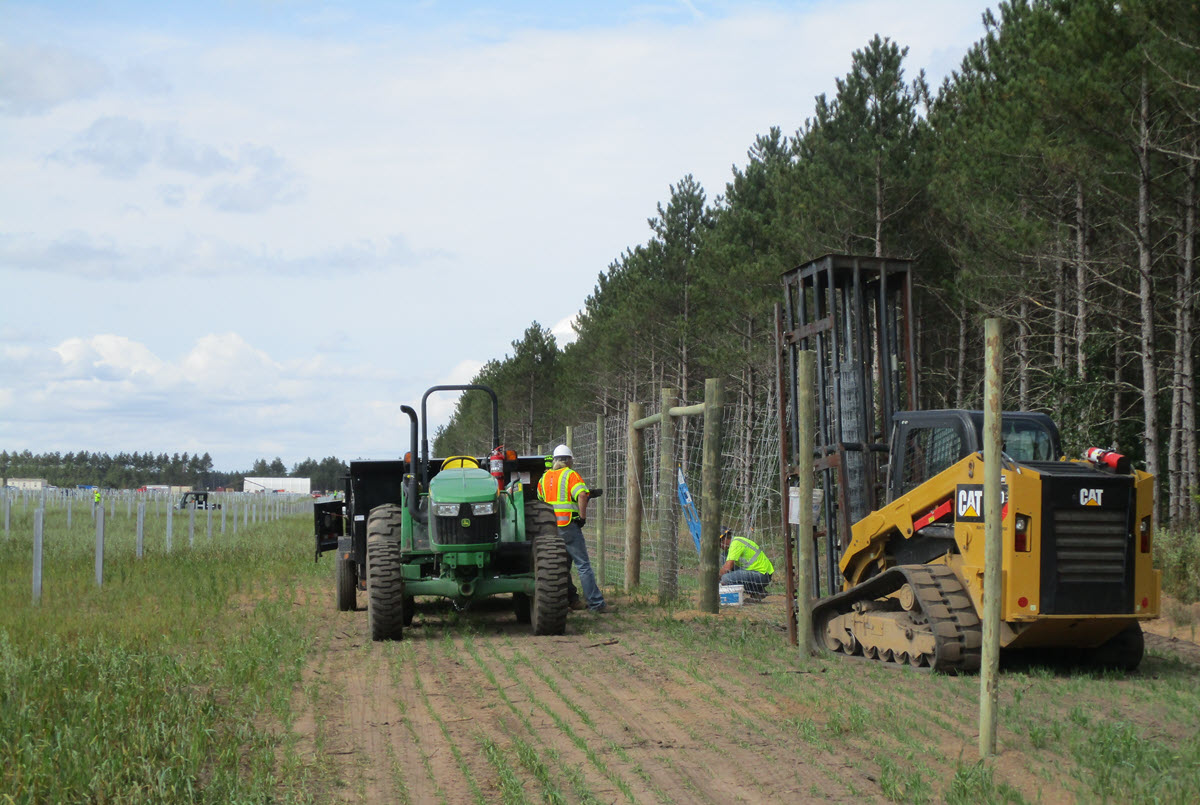Turtles may not know much about energy generation, but they can tell when the long grasses, shade and soils solar projects provide are the perfect places to nest and lay eggs.
According to the Wisconsin Department of Natural Resources, most of the turtle species in the state breed in May and June. That’s the time of year you’re most likely to see them crossing roads as they move from streams and rivers to higher ground. Turtles prefer to nest in suitable, sandy soils close to streams. As they make the trek, they may have to navigate their way through a solar farm. We do our best to ensure they do so safely.
At some sites, we’ve installed our 8-foot woven-wire fence upside down to leave larger 6-inch by 12-inch gaps at ground level for smaller critters. To accommodate turtles in certain areas, we leave larger 24-inch gaps. We also install wildlife crossing signs in high-traffic areas to alert the public.
We design our solar sites to allow animals to go about their lives as if the fences and projects aren’t there. In some cases, like the turtle’s, we also give them a safe, comfortable place to lay their nests and for their young to hatch.
During nesting season, vegetation management teams scout for signs of ground-nesting bird and turtle nests. They rope off these areas to keep the animals safe from human disruption until the young can grow and they eventually leave the premises.
Looking out for turtles and our other animal friends, be they furred, feathered, finned, scaled or exoskeleton-ed, is of a piece with our other sustainable development goals to disturb the land as little as possible. We will always:
- Restore the land to its original purpose after we decommission a project.
- Retain land features such as hills and valleys during construction and operation when feasible.
- Use only the land necessary for the project and return unused land to landowners.
The native grasses and pollinator areas at our solar projects benefit all sorts of wildlife in our communities. To learn more and check out other steps we take to accommodate wildlife, click our wildlife conservation tag below.


